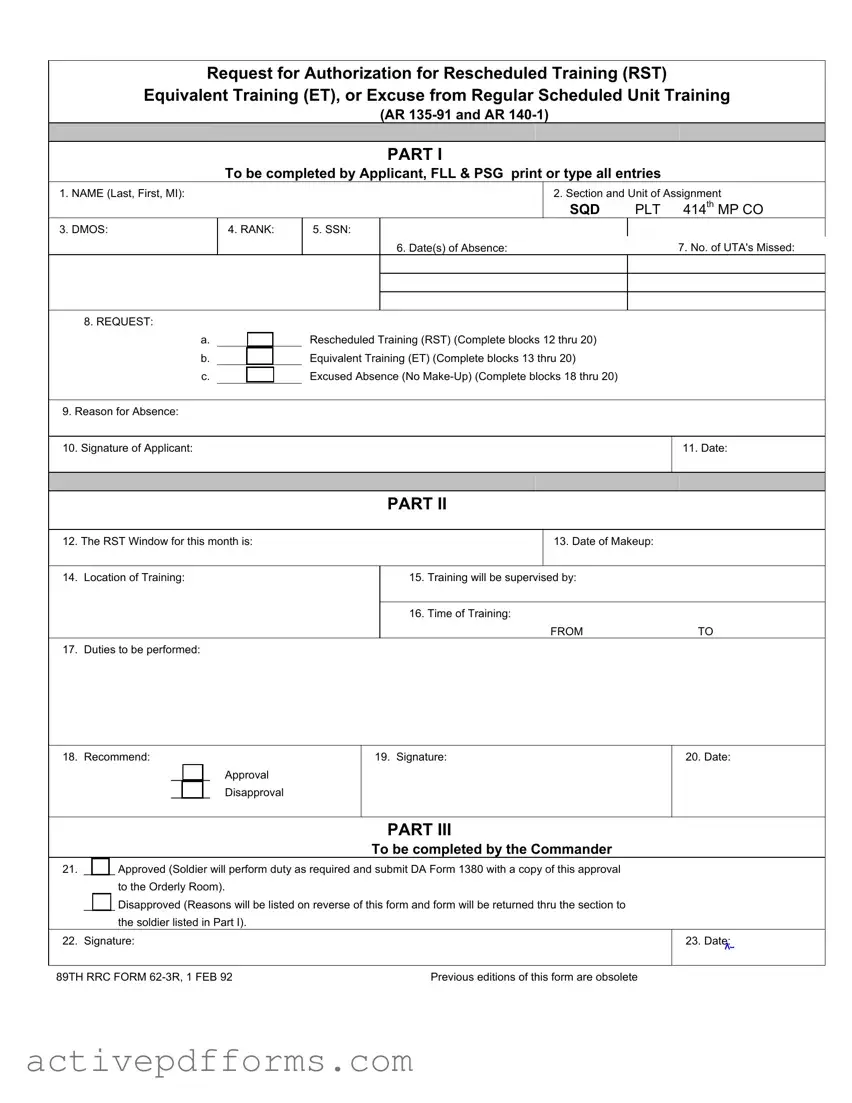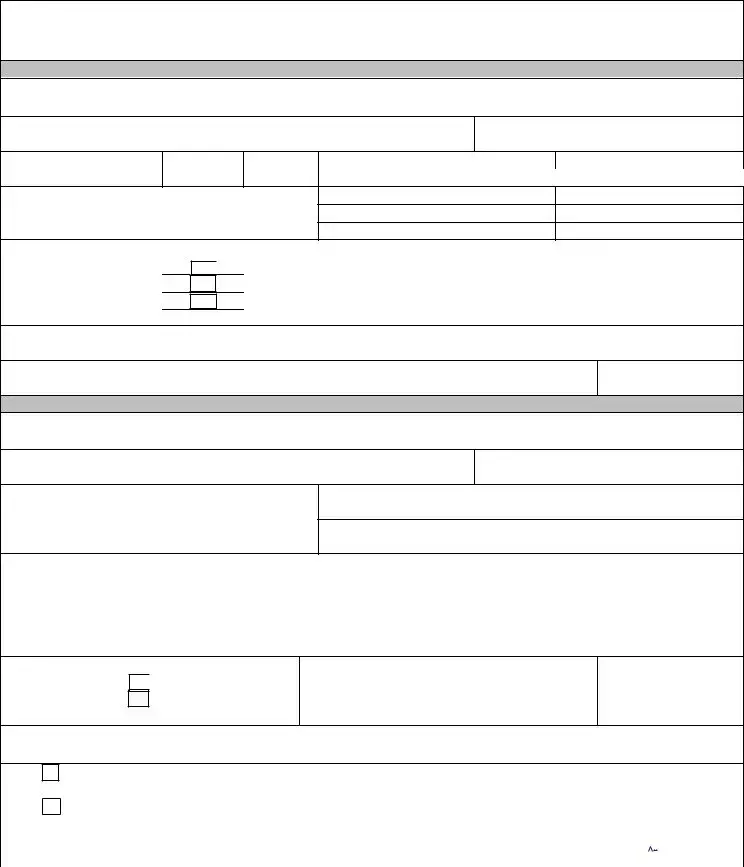- What is the purpose of the RST Army form?
The RST Army form is used to request authorization for three specific adjustments to scheduled unit training: Rescheduled Training (RST), Equivalent Training (ET), or Excuse from Regular Scheduled Unit Training. This form applies to regulations AR 135-91 and AR 140-1 and enables soldiers to formally request adjustments due to various reasons for absence, ensuring their training requirements are met in alternative ways.
- Who needs to complete the RST Army form?
The RST Army form must be completed by the applicant, which is the soldier requesting the adjustment. The First Line Leader (FLL) and Platoon Sergeant (PSG) may also need to contribute information or approvals in the initial section of the form. It's crucial that all entries are printed or typed to ensure clarity.
- How does one fill out the initial part of the RST Army form?
The initial part of the form, known as Part I, should be filled out by the applicant. Necessary details include name, Section and Unit of Assignment, DMOS (Duty Military Occupational Specialty), rank, Social Security Number (SSN), dates of absence, number of Unit Training Assemblies (UTAs) missed, the request type (RST, ET, or Excused Absence), reason for absence, and the applicant's signature and date.
- What details are required in Part II of the form?
Part II involves specifics about the makeup training or excuse, including the window for RST, makeup date, training location, supervising personnel, training time, duties to be performed, recommendation for approval or disapproval, and the relevant signatures and dates. This part is usually completed by the unit leadership.
- What is the role of the Commander in the RST request process?
The Commander's role is outlined in Part III of the form, where they provide the final approval or disapproval of the request. If approved, the soldier is required to perform the duty as indicated and submit further documentation (DA Form 1380) along with a copy of the approved RST form to the Orderly Room. If disapproved, reasons must be provided, and the form is returned through the section to the soldier.
- What happens if the RST request is disapproved?
If the RST request is disapproved, the reasons for the decision will be documented on the form, which is then returned to the soldier through their section. The soldier must then adhere to the original training schedule or address the reasons for disapproval if possible.
- Are there different types of requests that can be made using the RST Army form?
Yes, the form accommodates three types of requests: Rescheduled Training (RST), Equivalent Training (ET), and Excused Absence (No Make-Up). Each type of request has specific sections of the form that must be completed.
- Where should the completed RST Army form be submitted?
Upon completion, the form should be submitted to the unit leadership for approval and then forwarded to the Commander if required. After approval, the soldier should submit DA Form 1380 along with a copy of this approval to the Orderly Room, ensuring that all training requirements and administrative procedures are properly documented.

